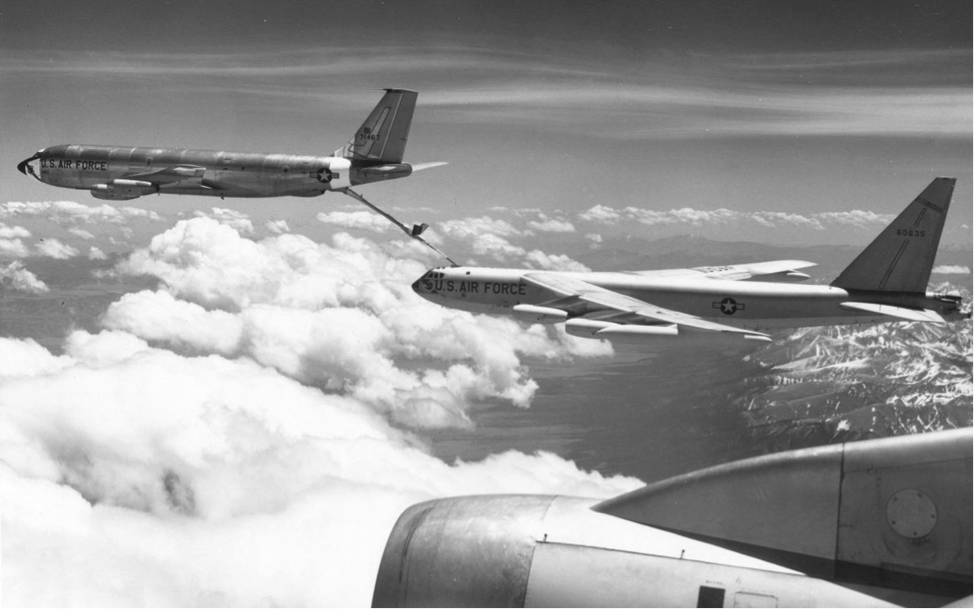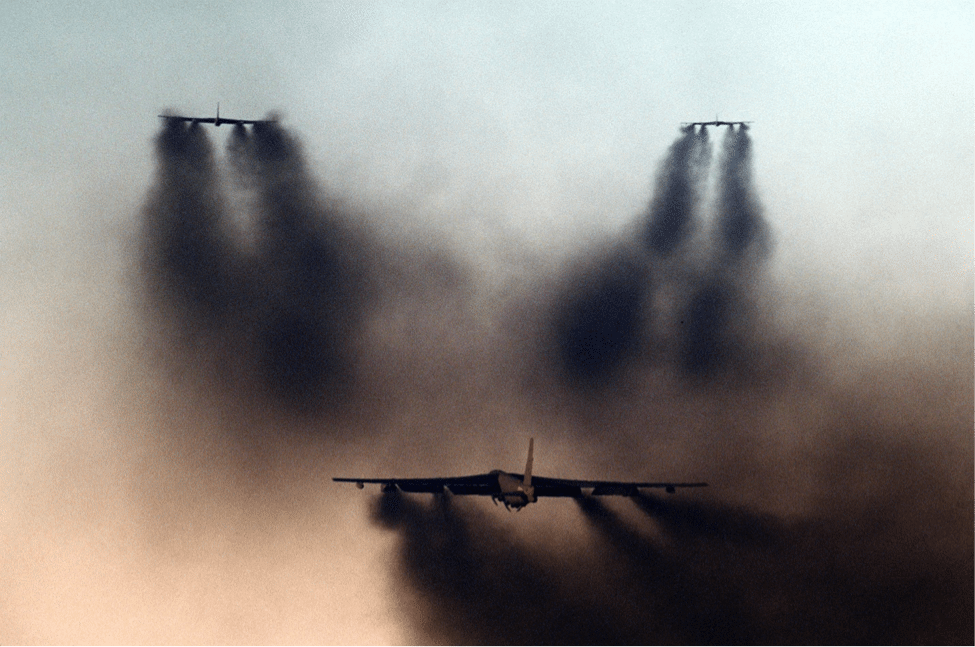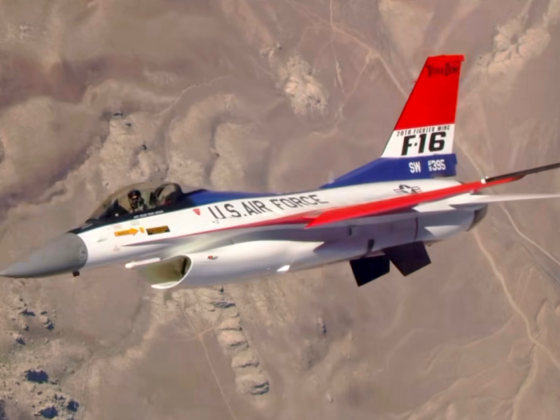The Boeing B-52: The Timeless One
On 15 April 1952, Boeing test pilot “Tex” Johnson pulled back on the control yoke of the prototype YB-52 Stratofortress and she took to the air for the first time. Once the design was deemed acceptable by the United States Air Force (USAF), the B-52 went into service in 1955. So began more than 60 years ( ! ) of continuous service by the Big Ugly Fat F*cker (BUFF) to the United States Air Force. Because the last of the 744 B-52s built was completed in 1962, the very youngest BUFF is still a card-carrying member of AARP. But the real mind-bending fact here is that BUFFs will most likely serve as this nation’s primary long-range heavy bomber well into the 2040s.

Genesis
The B-52 originally came about as a Boeing response to a USAF requirement for a new strategic bomber. Originally in competition with the Consolidated B-36 Peacemaker, the first B-52 design was drawn with straight wings and six turboprop engines. Continuing design evolution yielded a design with swept leading edge wings and four turboprop engines, contra-rotating propellers driven by turboprop engines (much like the Russian Tupolev 95 Bear strategic bomber), and several other wing / propulsion configurations before the 35 degree swept wing with eight jet engines mounted paired in four pods became the final basic B-52 design. Ironically the B-52, along with the B-47, ended up replacing the B-36. The first B-52G became operational on 13 February 1959, the day after Strategic Air Command (SAC) retired its last operational Peacemaker.

Building a Better BUFF
After the original B-52 design was accepted in June of 1946, the development of the B-52 was drawn out by changing USAF payload, speed, range, crew complement, and other requirements for the design. It has been said that Boeing’s previous bomber design, the B-29 Superfortress, required 153,000 engineering hours. It took about 3,000,000 engineering hours to get the B-52 into USAF service. But get the B-52 into service they did. The first operational B-52B flew for the first time during December of 1954. This aircraft, B-52B, Air Force serial number 52-8711, then entered service with SAC’s 93rd Heavy Bombardment Wing (93rd BW) at Castle Air Force Base (AFB) in California on 29 June 1955. The 93rd BW gained operational status on 12 March 1956.

Teething Pains
Like many new aircraft, B-52 operations came with some built-in headaches. Ramps and taxiways designed and built for lighter aircraft deteriorated under the aircraft’s weight. Initial B-52 fuel systems often leaked or iced up. The early bombing and fire control computers were unreliable. Even things as seemingly mundane as cabin temperature control were problematic. The Pratt & Whitney J57 engines were unreliable in early service. The B-52 fleet was grounded twice during 1956; once after an alternator failure caused the first fatal B-52 crash in February 1956, and again in July due to fuel and hydraulic problems. Tiger teams (dubbed “Sky Speed” teams) were brought in to pore over the B-52s and address a long list of specific issues. After this effort reliability was improved.

Firstest With the Mostest
B-52s also racked up a number of firsts during their early service years. On 21 May 1956, a B-52B (52-0013) dropped the first air-dropped thermonuclear weapon, a Mark 15, on Bikini Atoll in the Cherokee test shot. Four B-52Bs of the 93rd BW and four B-52Cs of the 42nd BW flew nonstop around the perimeter of North America in Operation Quick Kick covering 15,530 miles in 31 hours and 30 minutes between 24 November and 25 November 1956. SAC, in a thinly veiled play for better tankers to go with their new bombers, decreed that Quick Kick flight time could have been reduced by 5 to 6 hours had the bombers been refueled by jet-powered tanker aircraft rather than the old propeller-driven or even the jet-assisted later versions of Boeing KC-97 Stratofreighters.

The Longest and the Fastest
To demonstrate B-52 and SAC’s “global reach”, between 16 January and 18 January 1957, three B-52Bs flew non-stop around the world as Operation Power Flight in 45 hours and 19 minutes. The trio of BUFFs covered a distance of 24,325 miles. The bombers were refueled several timed during their flight…by KC-97Ls. During the next few years, B-52s set speed and unrefueled distance records. One of the most impressive was the unrefueled distance record flight from Kadena AFB in Okinawa Japan to Torrejón AFB in Spain. The flight covered 12,532 miles.










